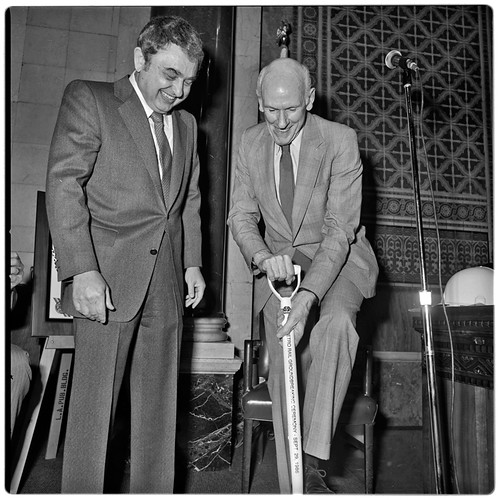A Thought Experiment:
For the last two years CableRailGyroCopter Inc. has developed projects in 10 North American cities. Each were to be purchased by the public sector for the purpose of providing public transit.
For the sake of simplicity, let’s assume each of the projects is two kilometers long and will cost $100 million USD each.
In 5 of the cities, projects are modestly developed and CRGC Inc. invests roughly $500,000 to develop each. For a variety of reasons all of these 5 projects die on the drawing room table.
In 3 of the cities, projects progress even further to the point that contract-signings are imminent. In these cities, CRGC Inc. invests $2 million per city in business development.
However . . .
In one of the cities an election is held and an insurgent mayoral candidate defeats the sitting mayor who planned on investing in the CRGC technology. The new mayor kills the project, dead.
In the second city, funding required from a senior level of government to realize the project is withheld when it’s found that city clerks improperly filed their paperwork. As the senior level of government really didn’t want to fund the CRGC project in the first place, they use this as a convenient way to get out of the arrangement. While the government claims their continued support for the program, officials close to the government indicate that the project is unlikely to ever be funded.
In the third city, people of all political stripes are onboard with the project. Unfortunately, a small grassroots political organization is looking to make a name for themselves and decides to fight the CableRailGyroCopter on the grounds that the parts necessary to build it would be imported, thereby depriving locals of jobs.
The grassroots group finds a young city councillor sympathetic to their cause because – like them – he is also looking to make a name for himself. The councillor rallies local unions against the project and successfully kills the endeavor as the unions are one of the largest contributors to the mayor’s election campaign.
So of the original 10 cities CRGC Inc. was developing projects in, only two remain.
In one of them, contracts have been signed and a ground-breaking ceremony has occurred. Unfortunately, a massive gap in the city’s budget is discovered and senior government officials decide to plug that gap by transferring funds allocated for the CRGC project to other services. People wonder aloud if that’s even legally possible, but creative policy-interpretation and accounting make it happen.
Expensive lawsuits ensue and while CRGC recoups some of their losses, they’re still stuck with a $10 million loss on the project. After all, they’d actually started manufacturing parts for the system.
So now CRGC is left with one lone project. And it’s a good project. Actually, it’s a great project. There isn’t a single problem with it; the funding is there; the locals love the idea; and politicians at all levels are in support of it. It’s a project that’s going to happen.
The question is this: How much will the project cost? Despite original estimates, you can bet it’s not going to be $100 million.
Over the course of the last two years, CRGC Inc. spent $18.5 million on business development in nine of ten cities without realize a single project. Do you really think CRGC is just going to eat those losses?
Of course not. Instead, when it comes time to tender, CRGC will find a way to tack on those losses onto the purchasing price of the project that is finally realized. Suddenly a project that was to cost $100 million is going to cost $118.5 million – more if you include the opportunity cost of not having that $18.5 million to invest elsewhere.
Transit planning has become as much about political gamesmanship as anything else. And while politicians and policy-makers may see this as a simple zero-sum game, one of the little discussed externalities that results from this is the artificial inflation of the price of transit products. Ideas are made, plans are born and projects killed with little more than the stroke of a pen.
Simple economic logic suggests that as the political process makes transit projects inherently riskier, two things will occur. Firstly, losses from “losing” projects will be turned into the costs associated with “winning” projects; and, secondly, as developing projects become more and more costly and riskier, investors will necessarily seek a higher return on their investment to justify that risk.
The only way to realize that higher return is to jack the technology’s price up.
Same holds true for the legions of contractors, consultants and builders all required to bring a project from idea through to fruition.
It’s kind of like a reverse Ponzi scheme. Losses involved in one collapsed deal get passed onto the next city contemplating a major transit investment. As long as no one ever follows through with making a purchase, those losses keep piling up and are passed around the circle. That is until the music stops and one city does decide to follow through. Then that city is left holding the losses caused by every other city’s political waffling.
This isn’t to say that every ill-conceived transit project must necessarily be followed-through with – that would cause a whole other set of problems. It’s also not to say that large companies are somehow owed something by government. Companies choosing to invest in the transit sector do so of their own volition with an understanding of the risks involved.
It is, however, to say that the risk embedded in the transit market makes it very difficult to drive down costs and find efficiencies. It’s probably a fair argument to say the transit market is actually built in such a way that it drives up costs and decreases efficiencies. Our current transit planning climate is so risky from an industry perspective, it’s a wonder any private sector company would venture the risk in developing any project.
And every time a project such as the Tampa-Orlando High Speed Rail or Toronto’s Transit City is brought so far to term only to be birthed stillborn, the price of providing good transit for everyone else is bound to increase in lock-step.
All images by flickr user Metro Transportation Library and Archives.




1 Comment